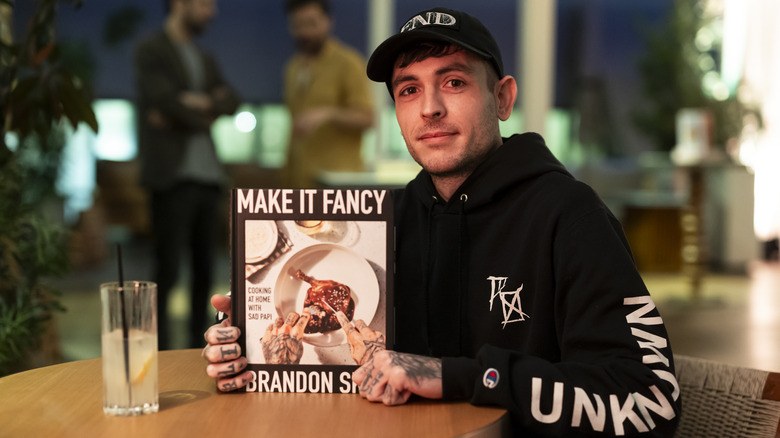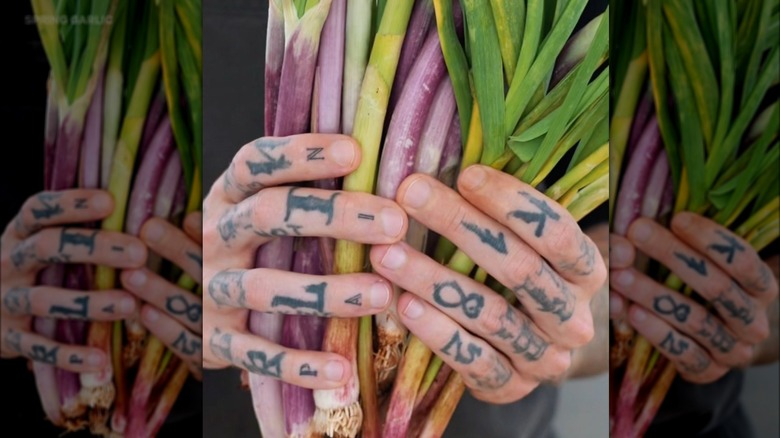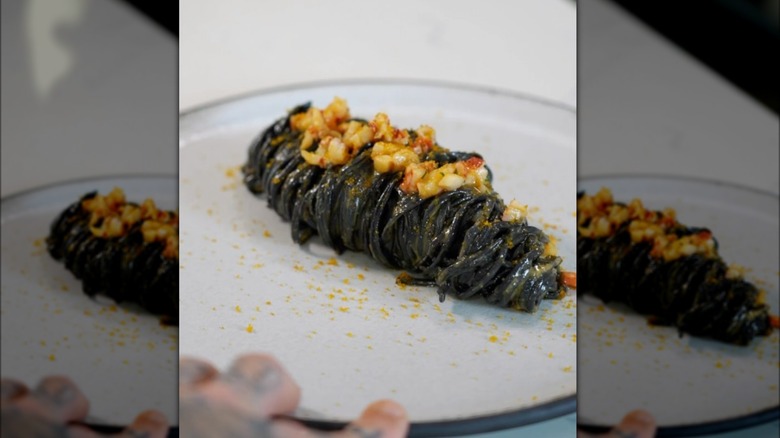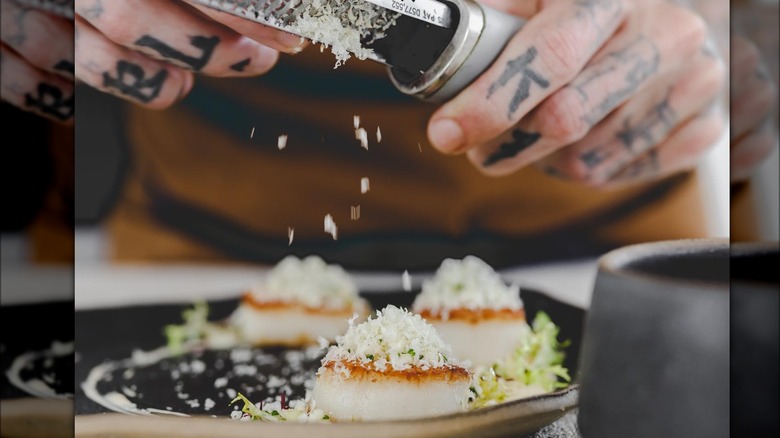How To Plate Like An LA Chef, According To Brandon 'Sad Papi' Skier
Brandon Skier is a social media influencer and former line cook in LA. In his new cookbook, "Make It Fancy: Cooking At Home with Sad Papi," Skier invites the erudite home cook to grasp the surprising, delicious techniques and concepts he's picked up from restaurants across the City of Angels.
We recently spoke with Skier in an exclusive interview with Mashed, where he shared his advice on making your food not just taste fancy, but look fancy, too. Skier's extensive experience cooking in some of LA's best contemporary restaurants attuned his eye to crafting visually stunning dishes. His plates resemble modernist art without relying on the pretense or showiness of unnecessary foams and excessive drizzles.
His first piece of advice when plating a dish is to get your foundation right. Executing a beautiful dish, Skier feels, requires a similar mindset to executing more complex designs: "People really like symmetry," says Skier. "It's why we design cars the way that we do. It's why we like furniture the way that we do." In one recipe in his book, seared duck breasts are sliced into perfect rectangles and offset by a scattering of halved hakurei turnips. In another, blistered shishito peppers are lined up flat on the plate in even rows. As Skier puts it, "I start with symmetry and build off it."
Select colorful ingredients
Like most cooks, Brandon Skier believes in the power of pops of color ("Nobody likes monotone food," he says), but color shouldn't be an afterthought reserved for garnishing: Consider shade and gradation long before plating, like when planning a menu or shopping for ingredients.
For his own work, Skier doesn't do anything "out of the ordinary" to achieve a colorful dish. Instead, he gravitates toward inherently colorful ingredients, taking advantage of the year-round farmers' markets that pepper the California coastline.
Take, for example, a simple salad. It may be tempting to stick with just one green for simplicity's sake, but Skier cautions against this: "Don't go for just iceberg," he advises. "Grab a mesclun mix that has some color scatted throughout it in the first place for contrast." Mesclun, French for "mixture," refers to the combining of a variety of young, tender salad greens, and aside from a simple vinaigrette, its inherent beauty needs little accouterment to look and feel special on the plate.
Experiment with classical techniques
Restaurant cooks practice their technique rigorously. And many techniques don't just influence the flavor and texture of food, but they also augment its appearance. "These are fun to learn, and it's nice to look at," says Brandon Skier. When working with a purée or a spreadable ingredient, Skier suggests borrowing from classical French cooking by shaping each of these into "a rocher or quenelle." A quenelle is formed by using two spoons to shape an ingredient into a three-sided scoop. A rocher, on the other hand, is used for stiffer ingredients and can be made with a single spoon to shape the ingredient into a smooth, edgeless oval.
Different ingredients demand different plating techniques. One such ingredient that requires a bit of additional finesse to plate aesthetically is long pasta, like spaghetti, tagliatelle, and bucatini. "If you're plating pasta," says Skier. "Try twirling it and making a 'football.'" Taking advantage of the inherent differences in the qualities of an ingredient like this can add variety and intrigue to a plate. Skier also suggests adding texture. "It can be something as simple as adding herbs, or a fluffy element like puffed grains."
Use the right tools
When it comes to preparing a so-called fancy dish, the right equipment for the job, like a sharp knife or a flexible spatula, is indispensable for achieving success. The same is true for plating. One such plating tool, according to Brandon Skier, is the plating spoon. These spoons come in various shapes and sizes for getting the exact shape you want onto the plate with grace. They're designed to be technique-specific: "Some spoons have a more narrow, pointed tip for saucing," says Skier. "Or if you go the quenelle route, some are designed to give you a better shape."
When garnishing, other tools Skier recommends include the microplane (perhaps the most underrated cooking tool), which gives "a fluffy effect" to grated ingredients, and narrow-tipped squeeze bottles for holding oils, vinegars, and other liquids that require a light touch. "Nothing is worse than plating something nicely and going for a drizzle of oil and a huge glug goes all over the plate," says Skier.
"Make It Fancy: Cooking at Home with Sad Papi" is now available for purchase here. Keep up with all things Brandon Skier and Sad Papi on Instagram and TikTok.



